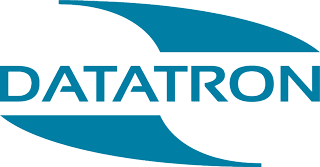4 document digitisation and workflow best practices
Document digitisation is often the first step of a digital transformation project. Building workflows using those documents, is often the second.
The benefits of each step are obvious: accessibility, ease of collaboration, efficiency and accuracy. But digitisation is more than a laundry list of advantages. It’s a way of doing business.
Even in these early steps, it's important to follow best practice and ensure you're baking in scalability and sustainability.
1. Understand what you need in a digital toolkit
Early in a digitisation project, you have to start making decisions about software. It’s therefore important to know what to value in digitisation tools. You want your document digitisation and workflow tools to:
- Generate high-quality, consistent, retrievable information. Files, even mountains of them, should be processed efficiently. The result should be a high-quality library of records. And each record should be consistent down to file type, folder structure and naming conventions.
- Seamlessly move from document management to workflows. You want versatile tools that scale. When it’s time to implement document workflows like e-forms, you want that next step in your digitisation strategy to be easy.
- Provide reporting and data that help you improve. Workflows should continue to evolve even after implementation. The best way to do this is by using data that your current workflows provide on bottlenecks, complexities and time to completion.
In our work with HR at Northumbria Healthcare NHS Foundation Trust, we used Therefore to digitise their expansive HR system.
Because Therefore is scalable, we were able to help our client progress plans for process automation with digital risk assessments, e-forms, and workflows. It’s expected to save them thousands of hours compared to their manual processes.
2. Work with experienced partners
You’ve considered handling digitisation in-house and found:
- Digitisation equipment can be large, expensive and specialised, requiring training or ready experience. (Aka, new hires).
- Digitising physical records still demands physical space and company time that stretch your resources.
These concerns often lead companies to weigh the benefits of outsourcing to a digitisation partner. But there are important questions to ask:
- Does document management mean more than scanning to them?
- Do they care about tailored solutions over a one-size-fits-all?
- How do their processes and tools bolster security and compliance?
- What security credentials do they hold?
- What does the partner offer in experience?
- Can they scale with you through a company digitisation strategy?
Above all, you want to make the most of your company resources while meeting security and compliance requirements. In outsourcing, you want the promise of a long-term partnership that offers ready experience and scales with your business.
3. Understand what informs a workflow
Automating a process (or many) with a digital workflow may seem like a daunting or complicated task. But if you focus on the familiar elements involved in the process, the task becomes clearer.
Steps to completion
Obvious, right? Of course, the steps in a process have a direct influence over workflow design. But instead of asking ‘What does this process look like when it goes perfectly?, you must ask: ‘What actually happens in this process?’
Invoices are not always accurate and purchase orders get rejected. A stakeholder may not give approval to that request. A digital workflow is not an ideal workflow but the most realistic one, finetuned.
People
Your digitisation project might be all about data, the bottom line and modernisation. But, never forget that digitisation affects people.
- First, the skills of your workers inform the details of a workflow. Their expertise determines what is repeatable and what requires their input. Plus, their buy-in makes a difference. They need training and effective change management to make digitisation a success.
- Second, customers expect a personalised and streamlined service. Workflows have so many behind-the-scenes benefits, but don’t lose sight of your customer (or employee) experience.
Digitisation minimizes human intervention, but it is not devoid of people. Done right, it creates a beneficial relationship between people and technology.
4. Have a long-term digital strategy
A digitisation journey might start with document digitisation in an Electronic Document Management System. Or by mending a process with an e-form solution. But any first step must keep in mind the long-term digitisation goals of your business.
What’s the best department to use to prove the ROI of digitisation? Where can you get the fastest results? How can you tie your workflow efforts into the broader goals of your organisation? And how are you looking to shift your resources as software starts to take some of the heavy lifting?
All of this is important to know from the start. That said, sometimes it’s hard to predict what your organisation will need next.
Our work with the East Lothian Council demonstrates why. We already provided a regular collection and scanning service for paper invoices. When the pandemic hit, however, they needed to be able to upload documents themselves. So, we adapted our existing use of Therefore as a hosting platform into a hybrid service with a custom portal for council employees.
This just goes to show: the ultimate best practice for document digitisation and workflows? Ensure your strategy and digitisation partner prioritise adaptability and scalability.


